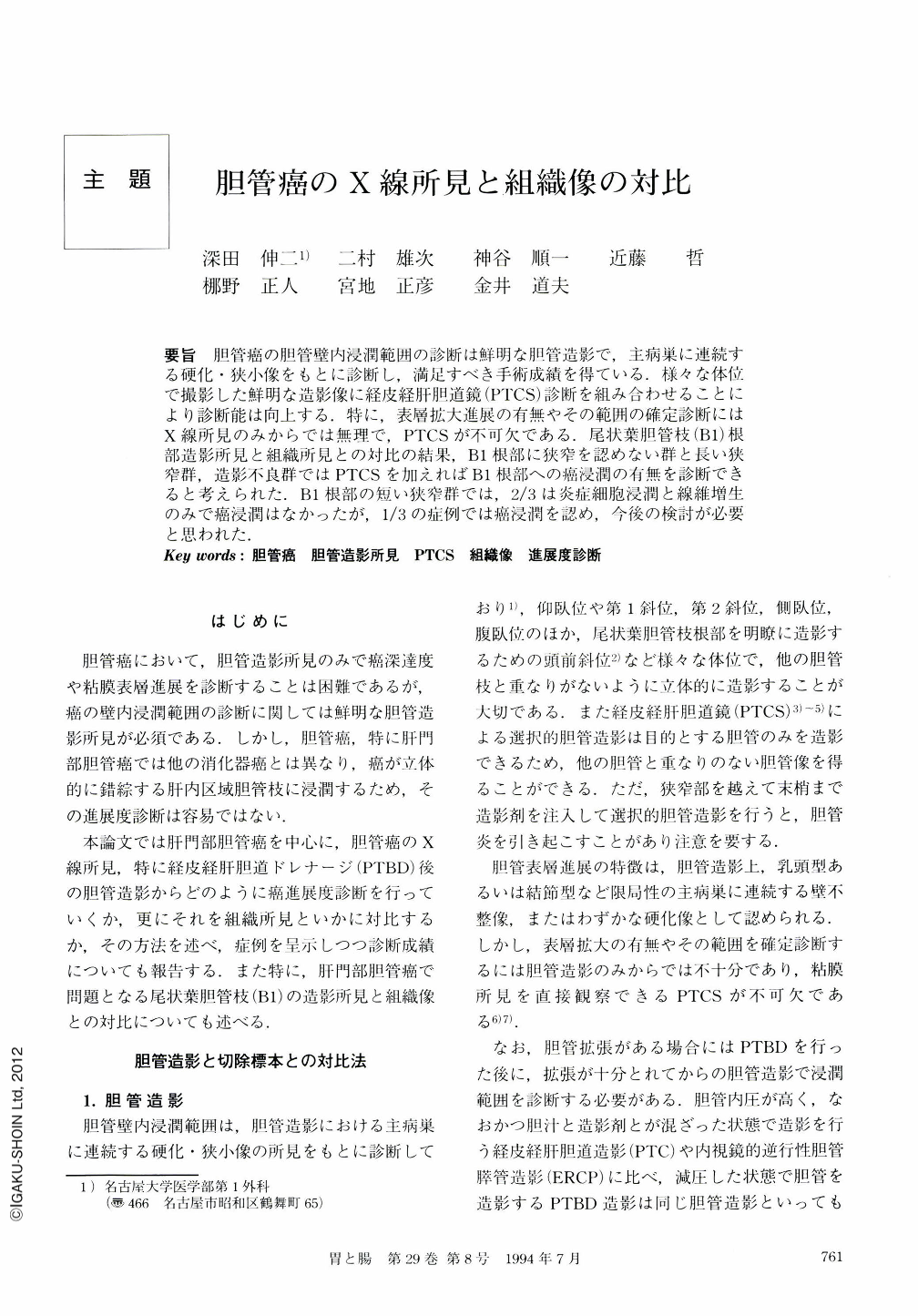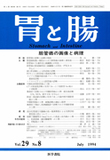Japanese
English
- 有料閲覧
- Abstract 文献概要
- 1ページ目 Look Inside
要旨 胆管癌の胆管壁内浸潤範囲の診断は鮮明な胆管造影で,主病巣に連続する硬化・狭小像をもとに診断し,満足すべき手術成績を得ている.様々な体位で撮影した鮮明な造影像に経皮経肝胆道鏡(PTCS)診断を組み合わせることにより診断能は向上する.特に,表層拡大進展の有無やその範囲の確定診断にはX線所見のみからでは無理で,PTCSが不可欠である.尾状葉胆管枝(B1)根部造影所見と組織所見との対比の結果,B1根部に狭窄を認めない群と長い狭窄群,造影不良群ではPTCSを加えればB1根部への癌浸潤の有無を診断できると考えられた.B1根部の短い狭窄群では,2/3は炎症細胞浸潤と線維増生のみで癌浸潤はなかったが,1/3の症例では癌浸潤を認め,今後の検討が必要と思われた.
We have used selective cholangiography via percutaneous transhepatic biliary drainage (PTBD) and performed percutaneous transhepatic cholangioscopy (PTCS) to achieve accurate preoperative knowledge of the extent of cancer spread into the bile duct. Selective cholangiography demonstrates biliary stiffness and narrowing which are characteristic findings of cancer involvement of the bile duct wall. High-quality cholangiograms achieved with PTBD in various positions are essential for obtaining precise informations about cancer extension. In superficial spreading carcinoma of the biliary tract, PTCS plays an important role in providing precise preoperative knowledge of the cancer extension into each segmental bile duct. Cholangiograms of the biliary branches of the caudate lobe (B1) were also compared with the pathologic findings. The groups without stenosis, with long segmental stenosis, and poor images could be diagnosed accurately by tube cholangiography and PTCS. On the other hand, in a group with short segmental stenosis it was difficult to diagnose cancer invasion to the confluence of Bl. Positive invasion existed only in one-third of the group but negative extension was present in two-thirds of the group.

Copyright © 1994, Igaku-Shoin Ltd. All rights reserved.


